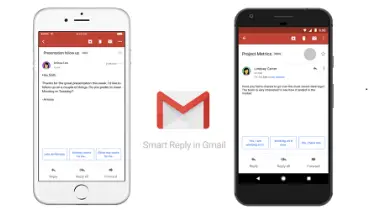How to Conduct Proper Market Research for Web Development

When it comes to building a website, you have plenty of stuff to brainstorm. But how to get started is the top question you might have.
Market research is the first step that is recommended. But how do you conduct market research for website design and development, and what is its value?
Importance of Market Research for Web Design
Whether creating a product or a service, market research is essential. Wise entrepreneurs and web development companies understand the importance of market research. Through market research, you can understand what customers want and create solid business strategies while conveying that vision through your website.
A potential customer does not know about your business. They form an opinion about your business through your website.
First, the customer visits your website and learns about your company. Then, they conduct their research and read what people have to say about your company.
Later, the customer talks to one of your customer service reps, forms an opinion, and decides what to do next.
As such, a website is a door to customer interaction. Without market research, a website will not yield the desired results.
Challenges of Market Research in Web Development
Once you know the importance of market research, you still need to know how to conduct proper market research for web design and some of the challenges you are likely to encounter in the process. In this blog, weshed some light on that.
Firstly, conducting market research for web design and development can be an arduous task for amateurs. If you are amateur in this, you may need to hire experts who will do market research on your behalf.
Professional web development companies are experts who can understand customer needs for web development, market trends, and what competitors lack. Upon gaining a thorough understanding, they must prepare an action plan and create a website.
If you skip hiring experts, you’ll need to take some time to explore blogs that help you understand how to conduct market research for web development. In this case, keep reading for a comprehensive guide on market research to help you achieve your goals.
Top Techniques (and Tips) to Conduct Market Research
Here are key market research techniques and guidelines you can use to help you conduct an effective market research for web development and have a well-prepared report before you move to find a tech partner or outsource web design and development services.
1. Basic Research
The way you conduct research depends on various factors. Based on the meeting with the client, you can conduct quick research and provide the details to your in-house developer.
Sometimes, the client just states their requirements and leaves the rest to the web development company. In such a case, the web development company has to follow the management’s instructions and talk to the web developers about how to execute the plan.
Once both the administration and the developers decide on a strategy, budget, and time frame to accomplish the project, the research is entirely based on the outcome you get after the meetings.
Last but not least, a thorough competitor analysis is necessary to know what your company lacks and what you need to do to offer more value to your customers.
2. Long Research
If the client does not give your company the required details or the clarity to carry out website development, you will need to conduct internet research and follow up with the client through mail and calls until you get the required information. This kind of research is known as long research that can take 2 to 7 days.
Next, you need to understand the industry that the client operates in and analyze the competitors and the performance of the client’s present website. If the client does not have an online presence, you need to devise another strategy.
Try to obtain information, preferably analytics, to give you the tools to build a robust website. Such a disciplined approach will help you save time and money. Who knows, the client may work with you for many more years.
3. In-depth Examination
You need to conduct deep-dive research that can take half a month or more for absolute clarity. In addition to market research for website design, you need information about the other aspects of the website like design, development, technical requirements, etc.
The next step is to obtain information about written material related to the website like publications, brochures, articles, annual reports, etc. These marketing collaterals will play an instrumental role in creating a website, and branding is also an integral part of a website. Hence, get brand-related details from the customer like color, design, messaging, logos, etc. because it will reflect the client’s brand image online.
Ask the client if they have a strategy to manage content on the website while integrating third-party apps and syncing data across various digital devices, and if they are interested in developing custom software solutions.
Check with the client if they have sorted out their domain name and hosting requirements. If these activities are not your area of expertise, suggest that the client outsource the same.
4. Google Analytics & Other Tools
Google Analytics is an innovative tool that sheds light on website performance, page visits, bounce rates, and areas of improvement.
Once the web development company has this relevant information, it should compare the data with other competitor websites to gain a better understanding of how they achieve their goals.
5. Meetings with Clients & Stakeholders
Web development companies and their employees can brainstorm but only to a certain degree. Sometimes, you can learn a lot from someone else’s perspective.
When the client, stakeholders, and staff conduct meetings, they will know what parameters they need to keep in mind while carrying out web design and market research.
Upon gaining a thorough understanding of the client’s vision and long-term objectives, you can plan the strategy, structure, and why you should launch a particular product/service.
Search for case studies of similar products that companies found in other countries. Analyze the performance of these products and use their insights while creating the client’s website.
6. Target Audience
Management's instructions, clients’ ideas, and your improvisation can create a website, but it's of no use without researching the target audience.
Customers of that particular geography should enjoy a wholesome visual experience, as well as an optimal user experience. Speak to customers at that location or read online reviews, testimonials, etc., to get a better idea.
While creating a website strategy, think about the user’s perspective. When you think from a different point of view, the outcome will also be different and better.
7. Keyword Research
Conduct detailed keyword research for your target customer base. Not everyone conducts an internet search the same way, and people search for products and services differently.
Know how customers in your target geography search for the product/service and develop an SEO strategy accordingly. No doubt, you need an SEO service provider to help you create an effective strategy.
If you have relevant keywords and key phrases that your target customers use, insert them into the compelling content written to entice them.
8. Social Media Listening
Merely posting blogs or social media posts is not enough to increase sales and engagement. Read the comments, queries, and suggestions that visitors leave on the blogs and posts.
Understand their pain points and incorporate their suggestions and advice while carrying out the web development and design process.
9. Post-Development Research
Market research is an ongoing process. Even after the website is ready, you still have to make minor tweaks and adjustments from time to time: the industry, the market, and even customer mindset change every few so often.
Staying stagnant in a business will result in a business becoming irrelevant. The same applies to website development companies too. Adapt or perish; it is the harsh reality of life.
10. Customer Journey Development
Chalk out the customer journey even before you begin website development. The website designer and the client must provide their valuable inputs. These inputs will help the development team create a website and a navigation tree.
To make this process easier, both parties must receive a detailed questionnaire that allows them to input their ideas.
11. Involve the Customers & Client
Many companies these days use an innovative concept known as co-creation, where they invite customers and the client to contribute to the website development process. Even if both parties may not possess technical knowledge for website development, they might have innovative ideas.
Using their creative inputs, web developers can create a phenomenal website that provides a more interactive and enriching experience. With the co-creation approach, website developers can incorporate new ideas and elements into the website.
Nonetheless, the only concern is the budget. If incorporating these elements leads to exceeding the budget, some elements can be added while others can be reserved for later. For example, when applying future updates, revamps, or upgrades, the developers can add those features/elements.
12. Concept Testing
An integral aspect of market research for web design and development is keeping an open mind and adopting new ideas constantly. Website developers must create various mock-ups and present them to clients during meetings and discussions.
Furthermore, give customers a first-hand experience of these mockups. Based on their experiences, they will offer suggestions that web developers can incorporate into the website.
When designers incorporate customer feedback into the website, it helps them create an engaging, user-friendly website that is profitable for the client. Hence, we can conclude that market research for website development is a continuous process that benefits not only customers, but also the client while boosting the brand image and business reputation.




















